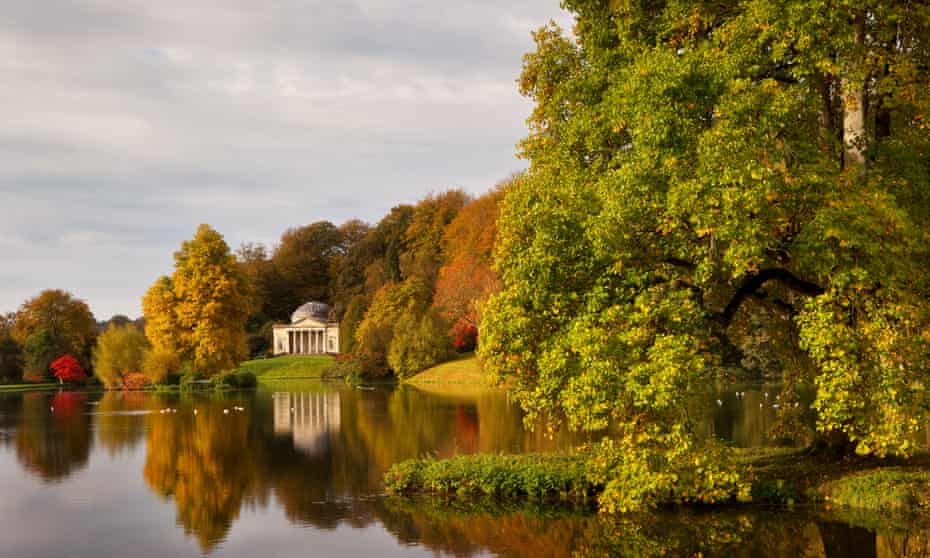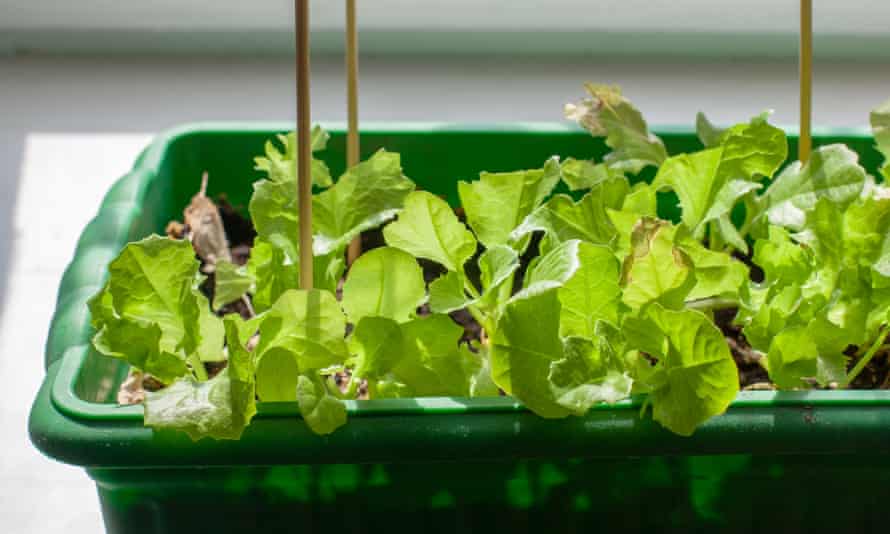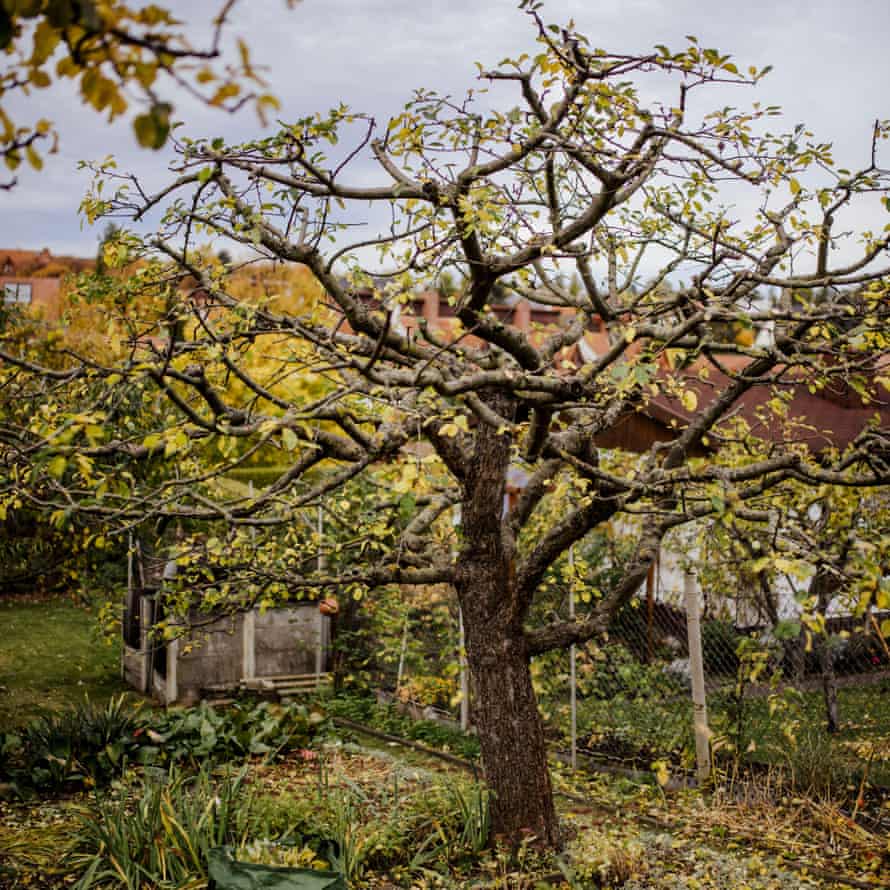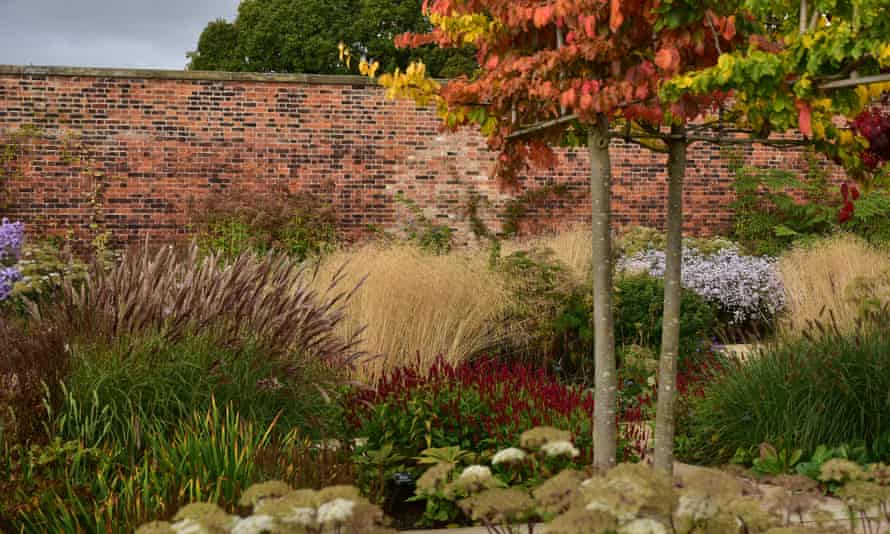Sow beans and grow a Christmas cactus: 10 ways to jazz up your garden this autumn

How to bring seasonal colours, scents and fruit to your garden – and where to head for fabulous winter days out
Fill a planter with colourful blooms
There is nothing jollier: fill a 20cm pot or a window box with peat-free compost and get going. Hellebores are my top winter flower: Ashwood Garden Hybrids has them in pink, red, purple, white, yellow and even black. Partner with a small Polypodium fern or grass-like Carex “Everest” with its variegated leaves. Underplant with white or pink Cyclamen coum. Plant everything in a rough triangle, with the larger hellebore at the back, the carex or fern in one front corner, and the cyclamen in the other.
Sow seeds for winter leaves

Sunny indoor window sills are prime real estate for growing fresh salad leaves. Fill a regular seed tray with peat-free compost, placing a water tray beneath. Sow lettuce seeds sparingly on the surface: “Salad Bowl” and Amaze are good, but any cut-and-come-again variety will do. Sow every three weeks for a regular supply and pick outer leaves from each plant, leaving the younger leaves to grow.
Create a dried flower display to last all winter
Pop outside now and you’ll find plenty of plant material to create a dried arrangement. Fallen twigs for structure, grasses for fluff and seed heads for shape. Miscanthus and Cortaderia (pampas) grasses work well alongside poppy and allium seed heads. Look on verges for wild grasses, teasel and wild carrot, but leave enough for birds. Some dried flowers keep their colour, such as Helichrysum and Persicaria amplexicaulis, or you could cheat with paint.
Grow a Christmas cactus
Retro wonder Schlumbergera x buckleyi, the true Christmas cactus, has smooth-edged segments, not toothed ones like its relative S truncata, known as the Thanksgiving cactus. Both are available in shops or on eBay in red, pink, white and apricot. Easy to care for Schlumbergera aren’t real cacti, but succulents from humid Brazilian forests. Grow near a window out of direct sun and allow compost to dry before watering. Snap stem segments off, and place the bottom third in compost to grow new plants for presents.
Make leaf mould

Fallen leaves make excellent compost: rake up as many as you can – or collect them with a lawn mower, which can help with chopping tougher leaves, like oak. Pile into a compost bin or keep in bags with drainage holes for water to run out. After a year or so, it will be soft, crumbly compost.
Plant witch hazel for scent and colour
Jazz up your winter garden with the colour and scent of witch hazel, Hamamelis x intermedia, a large shrub flowering on bare stems. Aphrodite has orange flowers and Goldcrest yellow, both with a strong scent. Ruby Glow doesn’t have much scent, making up for it with flowers that do exactly what they promise. Plant in a sunny to part-shaded sheltered spot to protect from wind and enclose the scent.
Sow broad beans

This is your last chance to sow broad beans outside for a spring harvest. Sow the seeds 5cm deep, 23cm apart in rows 30cm apart. In exposed or colder areas, cover with a cloche or a horticultural fleece. They need little care through winter and are one of the best groundcovers, slowing weeds by blocking light.
Plant tulip bulbs for a spring colour burst
November is tulip-planting month. I prefer those that reliably flower every year, such as Spring Green and Negrita. Tiny T turkestanica has cream flowers and will multiply every year, as will fuchsia Little Beauty. Plant three or four times the depth of the bulb.

Prune apples and pears
While they’re dormant, apples and pears should be pruned for a better crop next year. First cut out dead, damaged, diseased or rubbing branches. Then identify four to five main branches that form a cup shape, removing others and any upright shoots in the middle. Reduce main branches by a third and cut long side shoots to 20cm (the length of secateurs).
Plant an edible hedge
Now’s a good time to buy “bare root” hedging, plants that are dormant in winter and sent without pots or compost, making them cheaper. Informal hedges can be planted with edible plants for us and birds to eat, including: elderflower (Sambucus nigra), hazel (Corylus avellana), dog rose (Rosa canina), blackberry (Rubus fruticosus) and crab apple (Malus sylvestris).
10 gardens for winter inspiration

Many public gardens still have lots to see, from autumnal displays to winter walks planted for seasonal colour
Bodnant, north Wales
A dedicated winter garden planted in 2012 is now overflowing with colourful stems, fluffy grasses and striking bark.
nationaltrust.org.uk
Grey to Green Scheme, Sheffield
New public street planting by designers Nigel Dunnett and Zac Tudor is the largest such project in the UK, and also acts as a water sump to reduce flooding. greytogreen.org.uk
Pensthorpe Park, Norfolk
Renowned designer Piet Oudolf’s first UK public garden shows off winter stems, grasses and seedheads.
pensthorpe.com
National Botanic Garden of Wales
Winter flowers and a larger, covered glasshouse offer plenty for all to see year-round.
botanicgarden.wales
RHS Bridgewater, Salford
The RHS’s newest garden has acres of woodland paths and a walled garden full of winter displays.
rhs.org.uk
Horniman Museum, London
This south London museum houses a little-known experimental garden, with formal beds, new perennial meadows and shrubberies.
horniman.ac.uk
Lytes Cary Manor, Somerset
In winter, this National Trust garden’s topiary hedges and structure hold everything together to create intimate spaces.
nationaltrust.org.uk
Royal Botanic Garden Edinburgh
Winter light shows add to equally exciting winter planting.
rbge.org.uk
Stourhead, Wiltshire
Even in winter, Stourhead’s follies set around a beautiful lake remain atmospheric.
nationaltrust.org.uk
Yorkshire Sculpture Park
A constantly changing collection of outdoor sculpture to explore against wintery skies.
ysp.org.uk